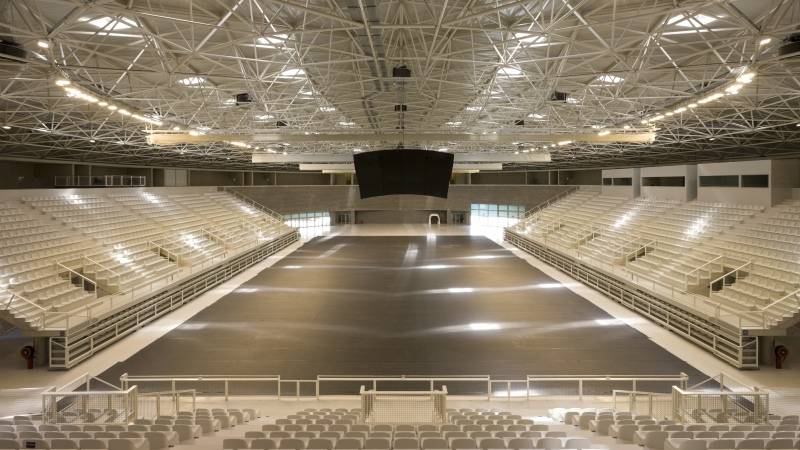Tours
PORTUGAL PLEASE! intends to provide an important part of the tourist information of each Municipality, for that, we make the connection to the Municipality of Gondomar, so that it is aware of all its information.

Gondomar is a tourist destination where traditions offer us moments of pleasure due to the diversity and richness of its artistic, leisure, historical and cultural heritage. Finally some of the reasons that invite you to visit Gondomar.
The Douro River that embraces Gondomar in 30 km of area is an element of Natural Heritage that translates one of the main tourist attractions of the Municipality, for all who seek Nature Tourism.
The agricultural heritage of Gondomar allows us, when traveling throughout the County, in its corners to find a large estate of rural heritage, which are called Espigueiros, small constructions in wood and granite whose function was the good storage of ears of corn.
The artistic heritage of Gondomar reflects the true echoes of the past, which are reasons for searching in the present, of which we highlight the churches with gilded wood and beautiful tiles, such as those of Gondomar (S. Cosme), Rio Tinto and Foz do Sousa .
When passing by the Rio Tinto Railway Station, you cannot pass indifferent to the Art of Tiles, in a magnificent set of tile panels, dating from 1936, by the painter João Alves de Sá that portray a little of the life of Rio Tinto as well as the legend that gave rise to the name of the parish.
The Santo Isidoro Chapel is an authentic example of Built Heritage and crowns Monte Crasto, which at 194 m above sea level represents a true tourist attraction in Gondomar, located in the heart of the city, offering a panoramic view over the Municipality and others that are borderline.

One of the reference points of visit in the Municipality of Gondomar is the White House of Gramido, in Valbom, of great historical connotation, since in this place the Gramido Convention was signed in 1847, which ended the civil war that was ravaging the country This Property of Public Interest is restored under the Polis de Gondomar Program.
Around the County you can visit and enjoy several secular manor houses, such as the manor of Casa de Montezelo, in Fânzeres embellished by Magnolia with a respectable age of 300 years of existence. Classified as a Property of Public Interest, where it highlights the chapel of N. Sra. Da Conceição with altar in polychrome carving. The 19th century poet and writer Araújo Rangel Pamplona lived in this stately home.
Solar da Bandeirinha, in Melres, is one of the most significant examples of civil architecture in the municipality of Gondomar. Palace that was a manor house for the Portocarrero family, which stands out for its opulent carving ornamentation that forms the ceilings of several rooms, a 1697 work.

While in Melres, be sure to visit the Casa Grande, of a manor and baroque style, built by Morgado de Vilar de Perdiz in the early 18th century.
In the parish of Foz do Sousa you can stop and observe the Bridge of Foz do Sousa, a project designed by Eng. Edgar Cardoso. This bridge has the same architectural features as the Arrábida Bridge, serving as a test for it.
Of priceless cultural value, the Júlio Resende Foundation, in Valbom, also known as Lugar do Desenho, was created from a collection of more than 2,000 drawings by Mestre Júlio Resende. In this cultural space, which benefits from a magnificent garden, temporary exhibitions take place. Also used for conferences and small concerts.
More recently, a great piece of equipment of great architectural value and reference for Gondomar was built, by the renowned and world renowned Architect Siza Vieira. We speak of Multiusos de Gondomar, prepared for major sporting, cultural, recreational, economic and social events.

Regarding Industrial Heritage, it is worth mentioning the Mining Industry of São Pedro da Cova, which was once a pole that generated employment. A landmark that identifies the existence of this industry and that represents an “ex-libris” of the parish, being a rare example of mining engineering is the Cavalete de S. Vicente, built in 1935 and deactivated since 1970. The wheels of the Easel are now open free in the garden of the Museu Mineiro de São Pedro da Cova. These wheels, due to their height (at the top of the easel) were called "swallows".
The Fundição de Sinos, in Rio Tinto, still working is a place of interest for tourist visits since, alongside the Fundição de Sinos de Braga, they are the only ones to produce in Portugal.
 EN
EN  PT
PT ES
ES FR
FR